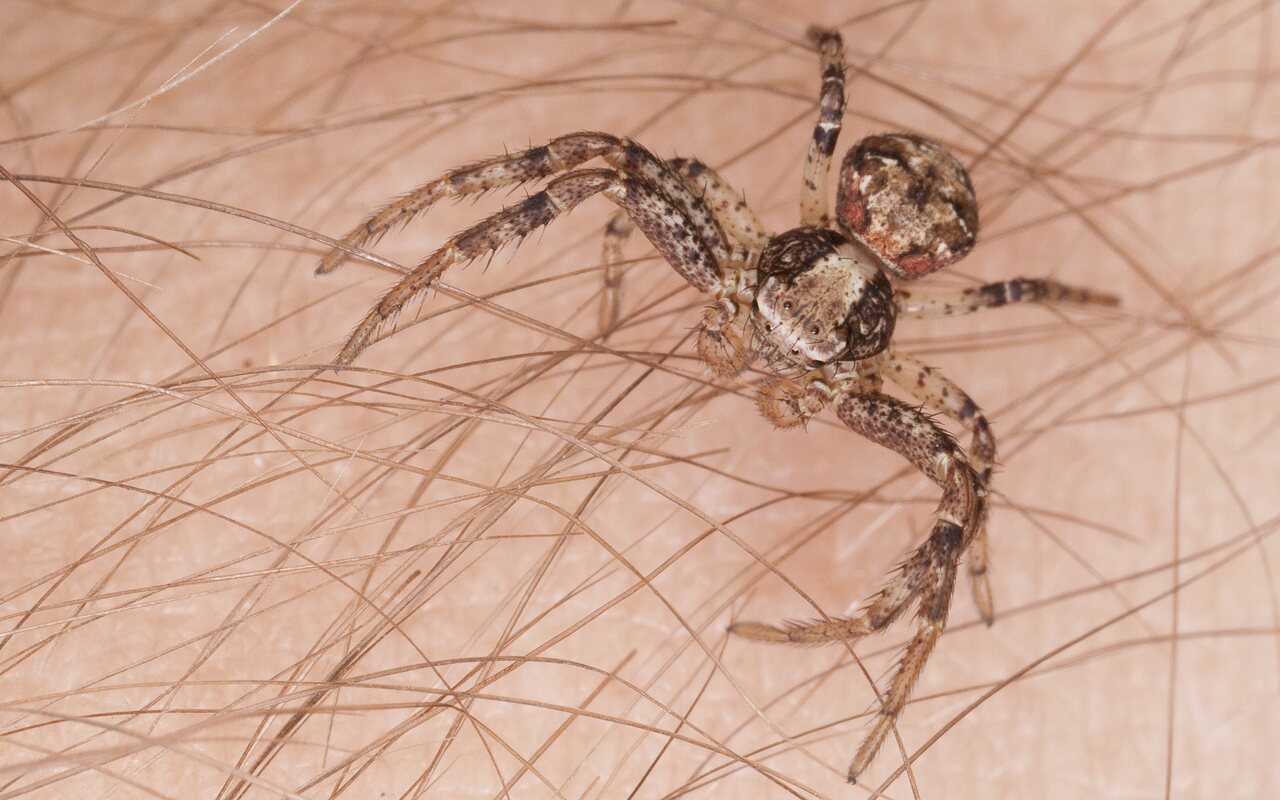
Xysticus audax female · pleištadėmis krabvoris ♀
- Zwillingskrabbenspinne
- pleištadėmis krabvoris
- tweelingkrabspin
- bokochód śmiały
- brynkrabbspindel
- araneae.nmbe.ch/data/249/Xysticus_audax
- arachnophoto.com/en/thomisidae-2/xysticus-audax/
- gbif.org/species/2165095
Distribution: Europe, Turkey, Caucasus, Russia (Europe to Far East), Kazakhstan, Iran, China, Korea, Japan. Xysticus audax is common in the whole of Europe.
Female 4‒8 mm. Color and markings viariable. Abdomen brown with a dark outlined leaf-like pattern. This pattern is not always clear. Carapace dark brown with a light broad median band containing a darker triangular spot that reaches halfway the carapace and two dark spots at the rear next to the median band. Legs and palps light brown with dark spots and annulations.
Male 3‒5 mm. Abdomen dark brown to black with white-yellow outline and yellow-white bands on top, which create a leaf-like pattern. Carapace black-brown with a broad yellow-brown median band which reaches as far as the anterior eyes and contains a darker triangular spot that reaches halfway the carapace and a thin yellow band along the edge. Legs yellow-brown with black-brown spots. First two pairs of legs from the top to halfway the tibiae black-brown with yellow annulations and thickened. Yellow-brown below. Palps black-brown with yellow annulations.
A useful character in Xysticus audax and Xysticus cristatus these two species is the central wedge-shaped mark on the carapace. In X. cristatus, this extends further back on the carapace and ends in a well defined darker point. In X. audax it is relatively short and does not end in a clearly defined darker point.
‥
0 comments
Add a comment